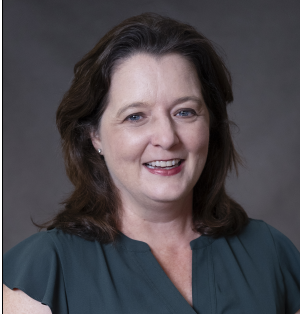Dr. Anne E. V. Gorden

Title: Professor
Education: B.S. Emory University, 1996
Ph.D. University of Texas at Austin, 2002
Postdoctoral Research Associate, The University of California, Berkeley, 2003
Postdoctoral Fellow, The Lawrence Berkeley National Laboratory Seaborg Center Postdoctoral
Fellow 2003–2005
Research Area: Organic, Inorganic, and Supramolecular Chemistry
Office: ESB2 301E
Phone: 806-834-3521
Email: anne.gorden@ttu.edu
Webpage: Anne Gorden Group
Principal Research Interests
- Molecular Recognition
- Synthesis of Functionalized Heterocycles
- Catalysts for Small Molecule Oxidation
Research
The overall research goal of the Gorden Research Group is to develop broad-ranging, state-of-the-art programs based on combining organic synthesis and inorganic metal coordination chemistry, and to apply this both fundamental chemistry and practical applications.
- Actinide Specific Metal Detection – The use of actinides for energy or military applications has resulted in a host of waste and contamination issues. A need exists for new materials that can coordinate, sense, manipulate, to decontaminate sites or for sensors, “sensing” polymers, sprays, or pastes to detect and isolate toxic metals. Chemosensors such as these will allow for rapid in the field visual identification and thus increase ease of decontamination. We have developed ligands incorporating a quinoxaline into a salen backbone. The addition of a quinoxaline to the salen imparts the fluorescence to the quinoxaline and alters the coordination site. We have used these complexes to probe the contributing factors toward selectivity, signal intensity, and the differentiation between actinides (like uranium and thorium) and transition metals (like copper or cobalt). Differences in their spectroscopic signature is characteristic enough to discriminate between uranyl and transition metals.
- Improving Actinide Separations and Extractions – Contained within nuclear fuel wastes are valuable, reusable materials including uranium and plutonium that can be recycled. Various ligand systems have been proposed for the selective coordination of actinides; however, their use in applications is often limited by low signal response, sensitivity to pH, competition from other metals, or they are not proliferation resistant methods. The focus of this project is the synthesis and characterization of coordination complexes featuring soft-donor atoms (i.e., nitrogen and sulfur) for extraction agents that can differentiate between metals. We will use these to prepare metal complexes with uranium and then transuranic metals to test for selectivity, and thus learn about the fundamental chemistry like hard-soft interactions, selectivity, and reactivity, to allow us to improve separations methods.
- Homogeneous Catalysis Based on Cu(II) or Mn(II) with Heterocyclic Ligand Supports – In “Green” chemistry we are seeking to use more environmentally-friendly or less-toxic chemicals, to eliminate purification steps, and to use catalytic rather than stoichiometric reactions methods, in the hopes of reducing wastes. The objective of this program is to develop ligand supported metal catalysts using quinoxolinol salens and copper or manganese. We have been able to use a quinoxolinol salen (salqu) copper complex in the oxidation of aryl methylenes in up to 99% yields while reducing the energy required because of increased solubility and better stabilization of the intermediates. We have investigated selective allyic oxidation in steroids, and are now investigating other allylic oxidations, the reaction mechanism, and electrochemistry.
Selected Gorden Group Publications:
Of > 50 scientific peer-reviewed journal articles, 4 patents, > 60 invited talks, > 100 contributed presentations – undergraduates are in italics, graduate students are underlined
- Monteiro, J. S. K; Hiti, Ethan A.; Hardy, E. E.; Wilkinson, G. R; Gorden, J.D.; Gorden, A. E. V; de Bettencourt-Dias, A. "New up-conversion luminescence in molecular cyano-substituted naphthylsalophen lanthanide(iii) complexes", Chemical Communications 2021, Advance Article (https://doi.org/10.1039/D0CC08128K)
- Niklas, J.E.; Hunter, K. M.; Gorden, Anne E.V. "Bonding Interactions in Uranyl α-Diimine Complexes: A Spectroscopic and Electrochemical Study of the Impacts of Ligand Electronics and Extended Conjugation" Inorganic Chemistry2019, 58, 22, 15088-15100. (https://doi.org/10.1021/acs.inorgchem.9b01695)
- Black, C.C.; Gorden, Anne E.V. "Oxidative Mannich Reactions of Tertiary Amines Using a Cu(II) 2-Quinoxalinol Salen Catalyst," Journal of Organic Chemistry 2019, 84, (15), 9806-9810 (https://doi.org/10.1021/acs.joc.9b01409)
- Wyss, K. M.; Hardy, E. E.; Gorden, Anne E.V. "An example of enhanced emission of a pyridine containing Schiff base Zn2+ complex," Inorganica Chemica Acta 2019, 492, 156-160. (https://doi.org/10.1016/j.ica.2019.04.032)
- Grundhoefer, J.P; Hardy, E. E.; West, M.; Curtiss, A.B.; Mononuclear Cu(II) and Ni(II) Complexes of Bis(napthalen-2-ol) Schiff Base Ligands,” Inorganica Chemica Acta 2019, 125-132. (https://doi.org/10.1016/j.ica.2018.09.043)
- Niklas, J. E.; Hardy, E. E.; Gorden, Anne E.V. “Solid-state structural elucidation and electrochemical analysis of uranyl naphthylsalophen” Chemical Communications 2018, 54, 11693-11696 (DOI:10.1039/C8CC05242E)
Department of Chemistry & Biochemistry
-
Address
1204 Boston Avenue, Lubbock, TX 79409-1061 -
Phone
806.742.3067
